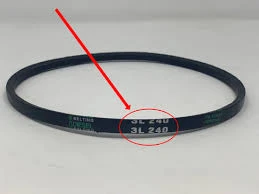- Arabic
- French
- Russian
- Spanish
- Portuguese
- Turkish
- Armenian
- English
- Albanian
- Amharic
- Azerbaijani
- Basque
- Belarusian
- Bengali
- Bosnian
- Bulgarian
- Catalan
- Cebuano
- Corsican
- Croatian
- Czech
- Danish
- Dutch
- Afrikaans
- Esperanto
- Estonian
- Finnish
- Frisian
- Galician
- Georgian
- German
- Greek
- Gujarati
- Haitian Creole
- hausa
- hawaiian
- Hebrew
- Hindi
- Miao
- Hungarian
- Icelandic
- igbo
- Indonesian
- irish
- Italian
- Japanese
- Javanese
- Kannada
- kazakh
- Khmer
- Rwandese
- Korean
- Kurdish
- Kyrgyz
- Lao
- Latin
- Latvian
- Lithuanian
- Luxembourgish
- Macedonian
- Malgashi
- Malay
- Malayalam
- Maltese
- Maori
- Marathi
- Mongolian
- Myanmar
- Nepali
- Norwegian
- Norwegian
- Occitan
- Pashto
- Persian
- Polish
- Punjabi
- Romanian
- Samoan
- Scottish Gaelic
- Serbian
- Sesotho
- Shona
- Sindhi
- Sinhala
- Slovak
- Slovenian
- Somali
- Sundanese
- Swahili
- Swedish
- Tagalog
- Tajik
- Tamil
- Tatar
- Telugu
- Thai
- Turkmen
- Ukrainian
- Urdu
- Uighur
- Uzbek
- Vietnamese
- Welsh
- Bantu
- Yiddish
- Yoruba
- Zulu
Dec . 11, 2024 10:12 Back to list
Comparing Fan Belts and Ribbed V Belts for Optimal Performance
Understanding Fan Belts and Ribbed V Belts Key Components of Automotive Efficiency
In the world of automotive engineering, belts play a crucial role in the smooth operation of an engine. Among these, the fan belt and ribbed V belt are two of the most commonly used types. Each serves distinct functions while contributing to the overall efficiency and reliability of a vehicle's performance.
What is a Fan Belt?
A fan belt, also known as a serpentine belt, is a vital component in an internal combustion engine. Its primary purpose is to drive the engine's accessories, such as the alternator, water pump, power steering pump, and air conditioning compressor. The fan belt wraps around multiple pulleys and operates in a continuous loop, providing the necessary power required to keep these components functioning effectively.
One notable feature of modern fan belts is their design; many are made from rubber or synthetic materials, which allow for flexibility and durability. This is crucial since they operate under high tension and temperature conditions. Over time, however, fan belts can wear out, leading to cracking or fraying, which can result in catastrophic engine failure if not addressed. Regular maintenance checks are essential to ensure the fan belt is in good condition, typically replacing it every 60,000 to 100,000 miles, depending on the vehicle model and driving conditions.
What is a Ribbed V Belt?
The ribbed V belt, on the other hand, is a type of belt characterized by its V-shaped cross-section and ribbed surface. This design improves traction on the pulleys, reducing slippage and enhancing the efficiency of power transfer. Ribbed V belts are often used in applications that require the transmission of higher torque, making them ideal for high-performance and heavy-duty vehicles.
Ribbed V belts are typically made from a blend of rubber, polyester, and cord materials to withstand rigorous conditions. They are engineered to handle dynamic loads, which means they can perform efficiently even under variable working conditions. The ribs on the belt allow for a greater contact area with the pulley, which not only improves grip but also reduces wear over time. As a result, ribbed V belts tend to last longer than traditional flat belts.
fan belt\/ribbed v belt

Comparison and Applications
While both the fan belt and ribbed V belt are integral to vehicle operations, their applications and mechanisms can differ significantly. Fan belts are generally used in a configuration where multiple engine accessories need to be powered simultaneously, while ribbed V belts are often applied in situations where one or two components require more focused power.
For example, in a typical car, the fan belt might power both the alternator and the air conditioning compressor at once, allowing for a robust and efficient operation of the vehicle’s electrical and temperature systems. Conversely, ribbed V belts might be found in the transmission system, where they facilitate the smooth transfer of power from the engine to the wheels, enhancing acceleration and overall driving performance.
Maintenance and Replacement
Maintaining both types of belts is key to ensuring vehicle reliability. Drivers should keep an eye out for signs of wear, including unusual noises, vibrations, or visible cracks. Routine inspections by a qualified technician can help identify potential issues before they escalate.
When replacing these belts, it is essential to choose high-quality parts that meet or exceed manufacturer specifications. Using substandard belts can lead to premature failure and subsequent damage to other engine components, resulting in costly repairs.
Conclusion
In conclusion, fan belts and ribbed V belts are fundamental to the efficient operation of modern vehicles. Their roles in powering engine accessories and providing torque transmission highlight their importance in automotive engineering. Understanding the differences and maintenance needs of each type can help vehicle owners ensure optimal performance, longevity, and safety on the road. Regular inspections and timely replacements remain essential to avoid unexpected breakdowns and to keep the engine running smoothly, ultimately contributing to a better driving experience.
-
Upgrade Power Steering Pump Belt for Smooth, Quiet Operation
NewsAug.27,2025
-
Precision Timing Belt & Chain: Engine Performance & Durability
NewsAug.26,2025
-
Precision Lathe Drive Belts: Durable & Reliable Performance
NewsAug.25,2025
-
84.5 Serpentine Belt: Durable & Precision Fit for Your Engine
NewsAug.24,2025
-
Premium Ribbed Drive Belts for Quiet Power Transmission
NewsAug.23,2025
-
High-Performance Vehicle Timing Belt for Engine Precision
NewsAug.22,2025

